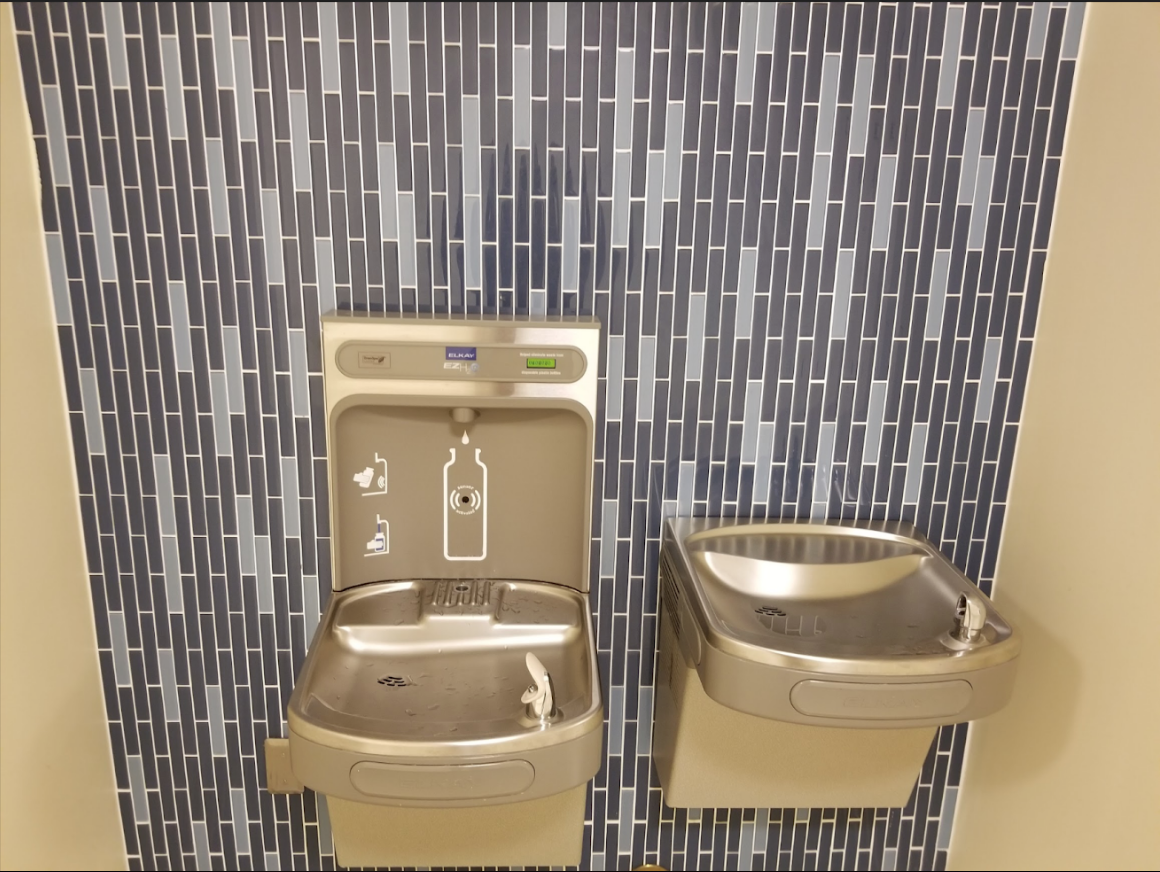Installation of “water bottle fountains” promotes reusable bottle usage
4 min read
Kelly Barron
By RHYS JOHNSON
Staff Writer
Those familiar with the UMW Fitness Center have undoubtedly used the water fountains in the facility at some point or another. These aren’t your grandfather’s water fountains, though- this is the future of hydration. Attached to each one is a faucet that can be used to fill reusable water bottles. All you have to do is bring your bottle to the gym, push a little tab and voila, out comes clean, cold and refreshing water.
Additionally, automatic faucets to fill up water bottles can be found in the University Center and the Hurley Convergence Center. It makes a lot of sense to install these faucets. Paying for bottled water from one of the vending machines whenever you want to do some cardio is a waste of money and natural resources. In a time when it feels that disposable plastics are being increasingly being shunned, it’s time to take action and find a cure for our plastic water bottle addiction. The modern water fountains would bring immediate change and continue UMW’s path to increasing sustainability on campus.
According to Ban the Bottle, which describes itself as “an organization promoting the environment by advocating bans on one-time-use plastic water bottles,” only one in five plastic bottles are recycled. Annually, Americans consume over 8.6 billion gallons of water from plastic bottles, and it can take up to 1,000 years for plastic bottles to decompose.
The organization’s website also adds that by simply purchasing a 16 or 32-ounce Nalgene bottle for about $10, you could save hundreds of dollars annually that would be spent on bottled water.
UMW students certainly do use reusable bottles. Take a look around campus and chances are at least a few people in classes are carrying around their own water bottles. The fact that people are using reusable bottles is good. The problem is that the campus does not have the faucets to support everyone bringing their own water bottles. All too often I see people awkwardly trying to fill up their Nalgene or Yeti cup in a traditional water fountain, struggling to not let the rim of the bottle touch the surface.
In 2015, Duke University estimated that it saved about 400,000 plastic bottles a year by installing 50 water bottle stations around campus. “We’ve had students promoting reduced water use since 2009 through national campaigns like ‘Take Back the Tap’,” said Casey Roe, outreach coordinator for Sustainable Duke in an article in Duke Today. “Plastic bottles take petroleum to make and gas to transport, so improving on-campus water infrastructure helps minimize our carbon footprint.”
Implementing the new faucets would cut down on bottled water dependency and encourage people to drink more water on a regular basis. There are water fountains in every building on campus, though many are outdated. Newer water fountains would accommodate the faucet attachment. This would not have to be a priority for residential buildings, but should be for academic buildings such as Trinkle, Monroe and Simpson Library.
One of the things that could prevent this hopeful reusable revolution would be the simple fact that water fountains just aren’t cool anymore- no pun intended.
According to a 2015 article in the Washington Post, “Fountains were once a revered feature of urban life, a celebration of the tremendous technological and political capital it takes to provide clean drinking water to a community. Today, they’re in crisis. Though no one tracks the number of public fountains nationally, researchers say they’re fading from America’s parks, schools, and stadiums.”
The few water fountains that remain are actually pretty safe, however. The water comes out in an arc, so the only part of the fountain you have to touch is the handle. As long as you don’t actually put your mouth on the spigot itself or lick the bowl that the water drains into, drinking from the fountain should be pretty harmless, though we cannot depend on everyone to have the same drinking etiquette.
There are some isolated cases, however, that continue the decline of the water fountain that was at one time considered to be a revolutionary invention. According to Mercola, a health website, “From 2011 to 2012, 32 drinking water-associated outbreaks were reported, causing at least 431 cases of illness, 102 hospitalizations, and 14 deaths. Norovirus, E. coli, Shigella, giardia, and other pathogens were identified as part of the outbreaks, although most of the water–associated outbreaks were due to Legionella in building plumbing systems and untreated groundwater. None of the outbreaks were due to ‘city water’ that had been properly treated, so this is, again, a small risk.”
After over 40 years of bottled water exposure, many Americans simply don’t trust good old tap water anymore, even though studies have repeatedly shown that it’s just as safe to drink. It doesn’t make sense to pay for a status symbol like Aquafina or Deer Park when you could just turn the faucet and drink it for essentially free right in your kitchen. In order to make a small contribution to the war against plastic, UMW needs to send plastic bottles packing.


